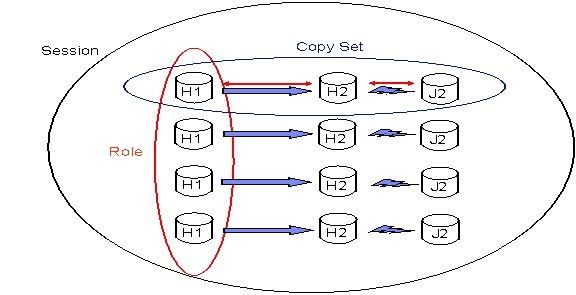| Tool Mentor: TPC – Prepare IT Service Continuity Capability |
 |
|
ContextTool mentors explain how a tool can perform tasks, which are part of ITUP processes and activities. The tasks are listed as Related Elements in the Relationships section. You can see the details of how processes and activities are supported by this tool mentor, by clicking the links next to the icons: DetailsBusiness continuity is no longer just about planning for the next system failure, network outage, or local catastrophe. Enterprises must develop business continuity plans that allow them to operate more efficiently and react quickly to changing business conditions. Data replication is a core function that is required for data protection and disaster recovery. The IBM® TotalStorage® Productivity Center (TPC) for Replication is designed to control and monitor copy services operations in storage environments. It also provides advanced copy services functions for supported storage subsystems on storage area networks (SANs). When TPC for Replication is installed, the volume groups can be configured and stored in TPC for Replication without the need for separate scripts. Paring of source and target volumes for each FlashCopy or Metro Mirror can be:
TPC for Replication provides a central point for monitoring and managing FlashCopy and Metro Mirror operations for the IBM TotalStorage Enterprise Storage Server solution, through its SMI-S enabled API. Replication status is displayed in a GUI or returned through a command line interface request. Replication commands are issued to operate on the volume groups without the need for scripts. TPC for Replication monitors the copy services execution of the storage device. TPC for Replication is designed to maintain data consistency across ESS Metro Mirror volumes during link outages and other failures. The TPC for Replication copy session ensures that data on multiple related heterogeneous volumes are kept consistent by managing the volume pairs in the session as a consistent unit. TPC for Replication provides an interface for creating, maintaining, and using volume groups and for scheduling copy tasks, and populating the lists of volumes using the interface. You can use TPC to perform other tasks such as:
The interface panels enable you to perform path tasks and scheduled replication tasks. A command-line interface is also available to allow you to do these tasks. TPC for Replication provides integrated administration, optimization, and replication features for interacting SAN devices. These features provide an integrated view of the system so that administrators can easily perform complex configuration tasks, and more productively manage the SAN infrastructure.
This figure graphically depicts the interactions of roles, copy sets, and a session. It shows one group of related volumes on a source storage system (H1 volumes) that need to be mirrored to another target pool of volumes (H2 volumes). When you have identified and created the source volumes in the group and the target volumes in a pool, you can then establish the mirroring relationship.
Sessions are a set of multiple copy sets that are managed as a consistent unit and that freeze and run functions can be performed on when errors occur. The sessions can also be viewed as a consistency group. TPC for Replication can automatically create the source-to-target relationship for you. When it is created, these volumes become part of a session or consistency group. Any error on any of the volumes in this session could trigger a suspend action across all of the volumes to ensure data consistency. Events such as loss of access to a source subsystem or the loss of the PPRC links could be examples of such conditions to trigger a freeze event. For more informationFor more information about this tool, go to the IBM TotalStorage Productivity Center page. |
©Copyright IBM Corp. 2005, 2008. All Rights Reserved. |
